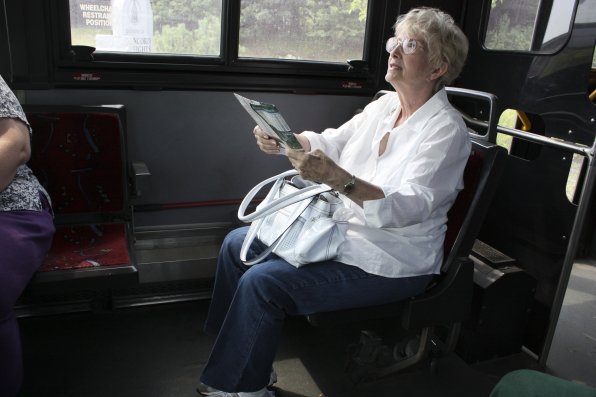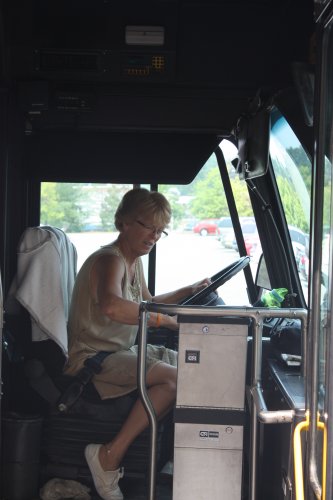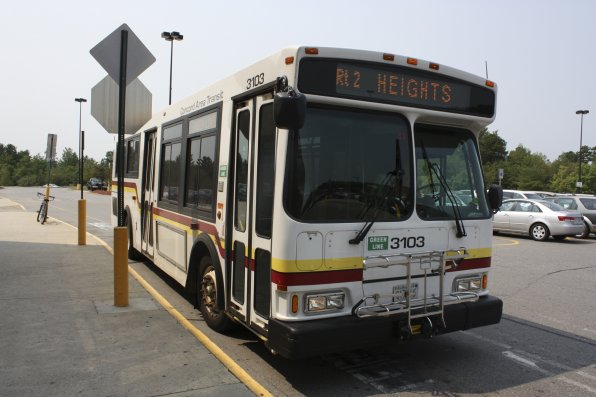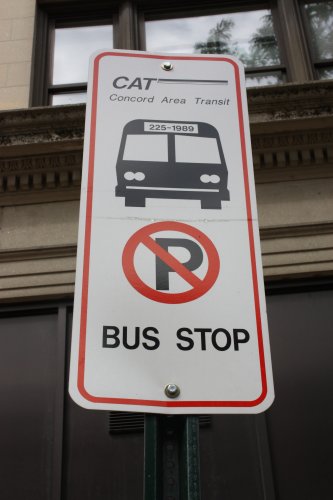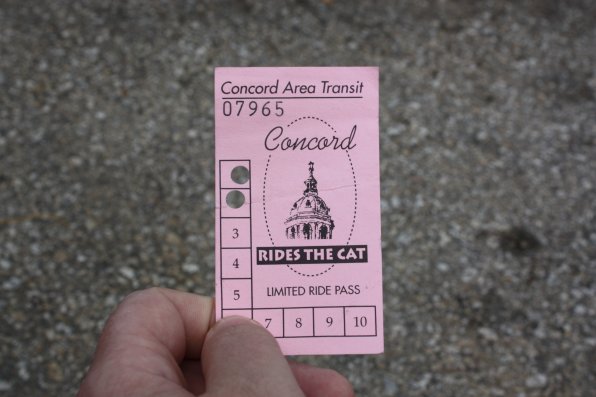It's fair to say that for the past century or so, America has become increasingly dependent upon automobiles for transportation. For those of us that commute to work, run our errands and get to our appointments via a personal car or truck, city buses may appear as simply an obstacle to avoid in heavy downtown traffic. But step foot on one of Concord's public buses and you'll discover an entire culture of folks that depend on the transit system to get them where they need to go.
On average, Concord Area Transit has almost 500 riders per day. That's a lot of people taking advantage of the busing system, which has been in place for the past 14 years. With four different routes running through the city (and buses driving a total of about 790 miles per day), the bus can get you pretty much anywhere in Concord. Riders can hop on the Industrial Park, Concord Heights, Penacook or the downtown trolley routes to get to their destination.
Lincoln resident Connie Donovan comes to Concord at least once a week to visit her doctors.
“I started coming here because my husband was in Concord Hospital,” Donovan said. “Before that, he drove me everywhere.” Now that her husband has passed, Donovan takes the bus from Lincoln to Concord, then catches a CAT bus to get to her local appointments.
“Whenever I have a doctor's appointment, I make a day of it,” Donovan said. Without the CAT system, Donovan said, she would probably have to take a cab, but “that would be terrible. You know how expensive cabs can be.”
Concord Hospital is one of the most popular stops on the CAT, with multiple routes culminating at the facility. Concord resident Paula Kallechey counts on the bus to get her there for her cancer treatments.
“I've never driven,” Kallechey said. “Two people tried to teach me, but it was impossible.” She said that she likes riding the bus not just for its convenience, but because she considers ridesharing and public transportation to be a good, “green” initiative.
“You know, it's to save the planet,” Kallechey said.
Twenty-one-year-old Warren Nelson of Concord has used the Industrial Park bus to get him to his job at Granite State Independent Living for the past three years now. Nelson doesn't drive, and without the bus to get him to work, he doesn't know what he would do.
“I guess I could walk,” Nelson said, “but it would be a pretty long walk.”
There might not be a more enthusiastic CAT rider than C.J. Witham of Penacook. A resident of Briar Pipes Apartments, Witham was effusive with praise for the CAT system on a recent bus ride.
“They do everything short of picking you up at your doorstep and carrying you to the bus,” Witham said, “and if you needed them to do that, they'd probably do it.”
Witham said she actually gave away her car to her daughter because the bus system was so convenient for her.
“I have to depend on it for everything,” Witham said. “I'm over a certain age, so I get to ride for 50 cents. You can't get anything for 50 cents these days, not even water. The price can't be beat.”
Witham is just one of the cadre of colorful characters that can be found riding the CAT. With the same familiar faces popping up regularly on the same routes, bus rides can turn in to a sort of social event, or at least a chance to say hi to your neighbor if you'd rather chat than ride the bus in silence. Even the drivers get in on the action.
At ten years, Tammy Alden is the longest-tenured CAT driver working. She said she interacts with her regular riders so much that they form intimate bonds.
“You get to know their family life,” Alden said. “You get involved with them without even realizing. They tell you about their homes and families, and you find yourself wondering about them (later).” Alden said she still keeps in contact with some of her former customers that have moved away from her routes. “You ride the bus once, I know you,” Alden said.
The closeness between driver and passenger, like the buses, go both ways. Nearly all passengers, when asked, had their favorite drivers who, in their minds, were clearly the best of the bunch. That speaks volumes for the 15 drivers and substitutes that pilot the buses.
Alden was on the receiving end of her fair share of praise, which can be credited both to her excellent driving ability (watch her take a wide turn through the Heights and you'll agree) and to her approach to customer service.
“You have to think 'How would I want to be treated?' ” Alden said. “That's how I treat my customers. I try to help them get where they need to go, help them understand the schedule. I always think that there's a batch of eggs back there, you gotta get them home before they crack.”
Recently, Concord Area Transit has come under scrutiny from the city council, who are considering a change to the system, currently run under the umbrella of the Community Action Program Belknap-Merrimack Counties.
The system is on the verge of combining its two most underridden routes, the Industrial Park and Trolley routes.
“The downside is that the trolley would not run as much,” said Transportation Director Virginia Schneider, “but the upside is that people wouldn't have to transfer so they'd reduce their travel time.”
Tammy Alden said she hates to think what it would be like if routes were cut.
“It would be tough,” Alden said.
While statistically these routes may be the least ridden and therefore accrue the least amount of money from fares, there is still a loyal group of riders who would like to see the routes continue as is.
It's not all cuts for the CAT these days, however; another proposed change will see some routes running on Saturday as part of a ten-week trial period (buses currently run Monday through Friday). If these trial routes get enough ridership, they could be here to stay.

